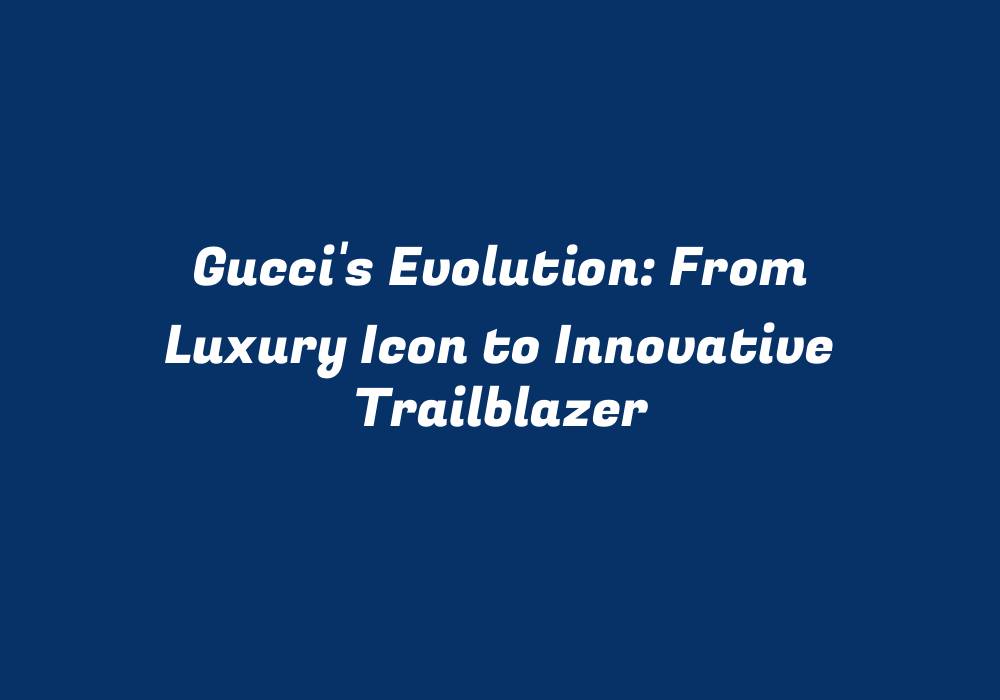Gucci’s Evolution: From Luxury Icon to Innovative Trailblazer
Introduction
The world of fashion has seen its fair share of iconic brands come and go. Yet, some have managed to endure the test of time and maintain a consistent presence in the minds of consumers. One such brand is Gucci, which has not only evolved with trends but also pushed boundaries in fashion design and marketing strategies. This article delves into the rich history and innovative growth of this luxury powerhouse.
Gucci’s Origins
Established in 1921 by Guccio Gucci, a native of Florence, Italy, the brand initially focused on producing quality leather goods such as handbags and luggage for wealthy clients. With its emphasis on craftsmanship and style, it wasn’t long before Gucci caught the attention of elite social circles in Europe and eventually worldwide.
Expansion and Growth
In the 1950s, Aldo Gucci (son of founder Guccio) expanded the brand’s reach by opening new boutiques in cities such as Milan, Paris, and New York. It was during this era that the now-iconic Gucci loafer was introduced, quickly gaining popularity among the fashionable elite. The house soon became synonymous with luxury and opulence, reflecting the wealth and sophistication of its clientele.
Evolution of Style
Throughout the 1960s and ’70s, Gucci continued to evolve with the times, incorporating innovative designs and materials into their collections. The brand experimented with brightly colored leather goods, as well as the introduction of the iconic bamboo handle on handbags, which has become a staple in modern fashion. Additionally, their use of luxurious fabrics like silk and velvet helped define the luxury status that is still associated with Gucci today.
Creative Collaborations
In recent years, Gucci has solidified its position as an industry leader by collaborating with various artists, designers, and other fashion houses to create unique collections. Some notable partnerships include Tom Ford’s tenure as Creative Director from 1994-2004, which led to the revitalization of the brand and a more contemporary aesthetic; and their collaboration with artist Takashi Murakami, resulting in a range of eccentric accessories featuring his signature cartoonish characters.
Digital Marketing Strategies
With the rise of social media, Gucci has embraced digital platforms as an opportunity to connect directly with its audience and showcase their unique creative vision. Their innovative approach to advertising has led to numerous viral campaigns, such as the “Gucci Ghost” collection, which featured a series of playful designs inspired by Trap and Tone, a street artist who created works using the image of a ghost character. This campaign generated widespread attention and contributed to Gucci’s status as an innovative leader in the fashion industry.
Sustainability Initiatives
Gucci has also demonstrated its commitment to environmental responsibility by introducing eco-friendly initiatives into its production process, including the use of organic cotton and recycled materials, as well as a partnership with the Eco-Age Fashion Transparency Index. This focus on sustainability not only contributes positively to the environment but also reflects Gucci’s dedication to creating a lasting impact in the fashion world.
Conclusion
From its humble beginnings as a small leather goods shop, Gucci has transformed into an international powerhouse that consistently pushes boundaries and challenges conventions within the fashion industry. With a rich history of style evolution and creative collaborations, the luxury brand remains at the forefront of modern design and innovation. As it continues to embrace new technologies and sustainable practices while maintaining its commitment to luxury, Gucci solidifies its position as an iconic and forward-thinking force within the world of fashion.
